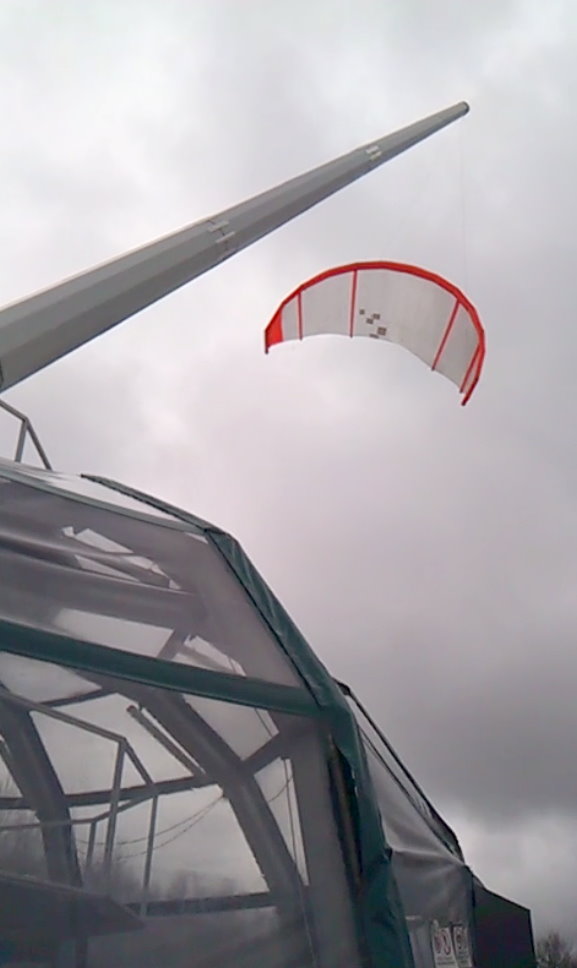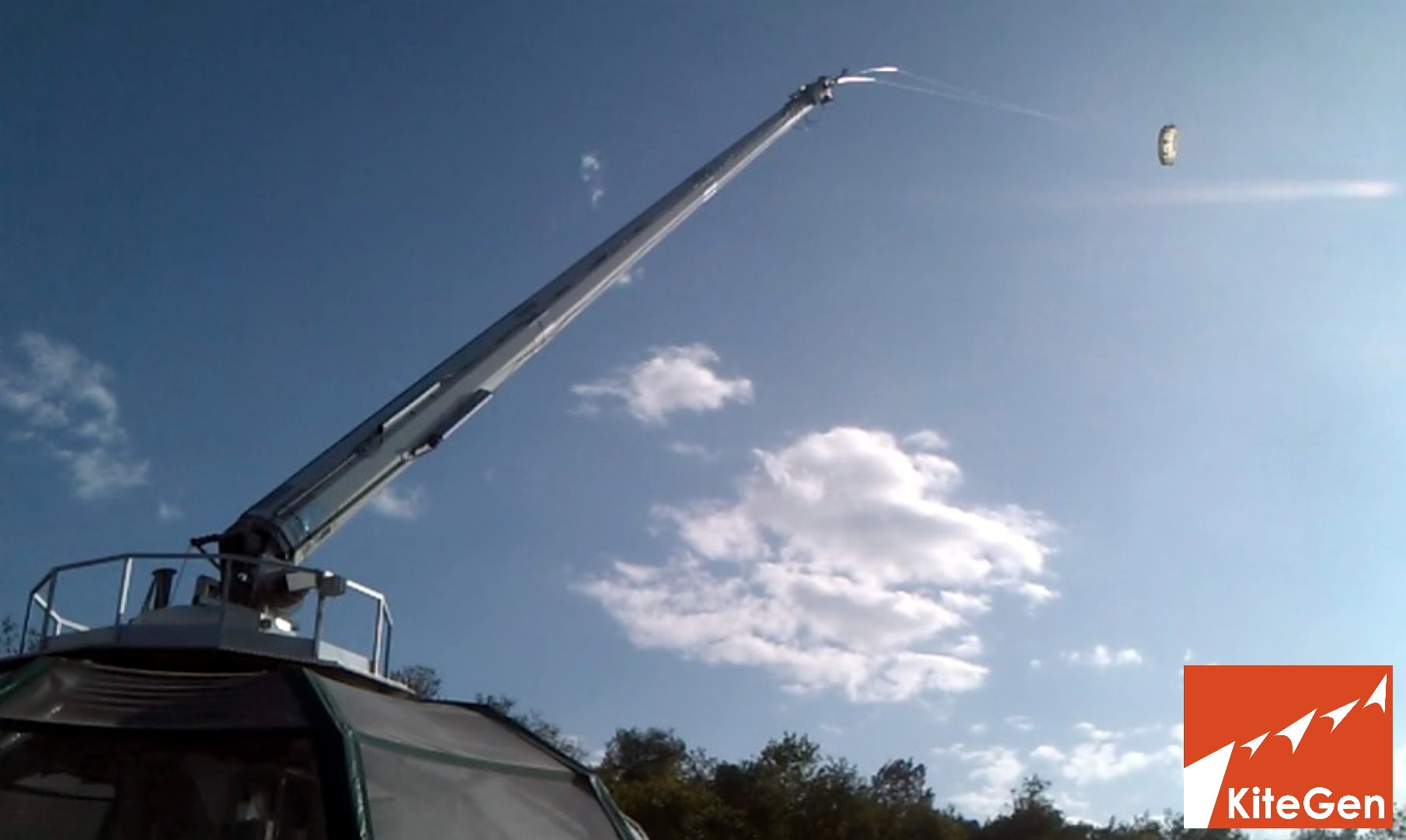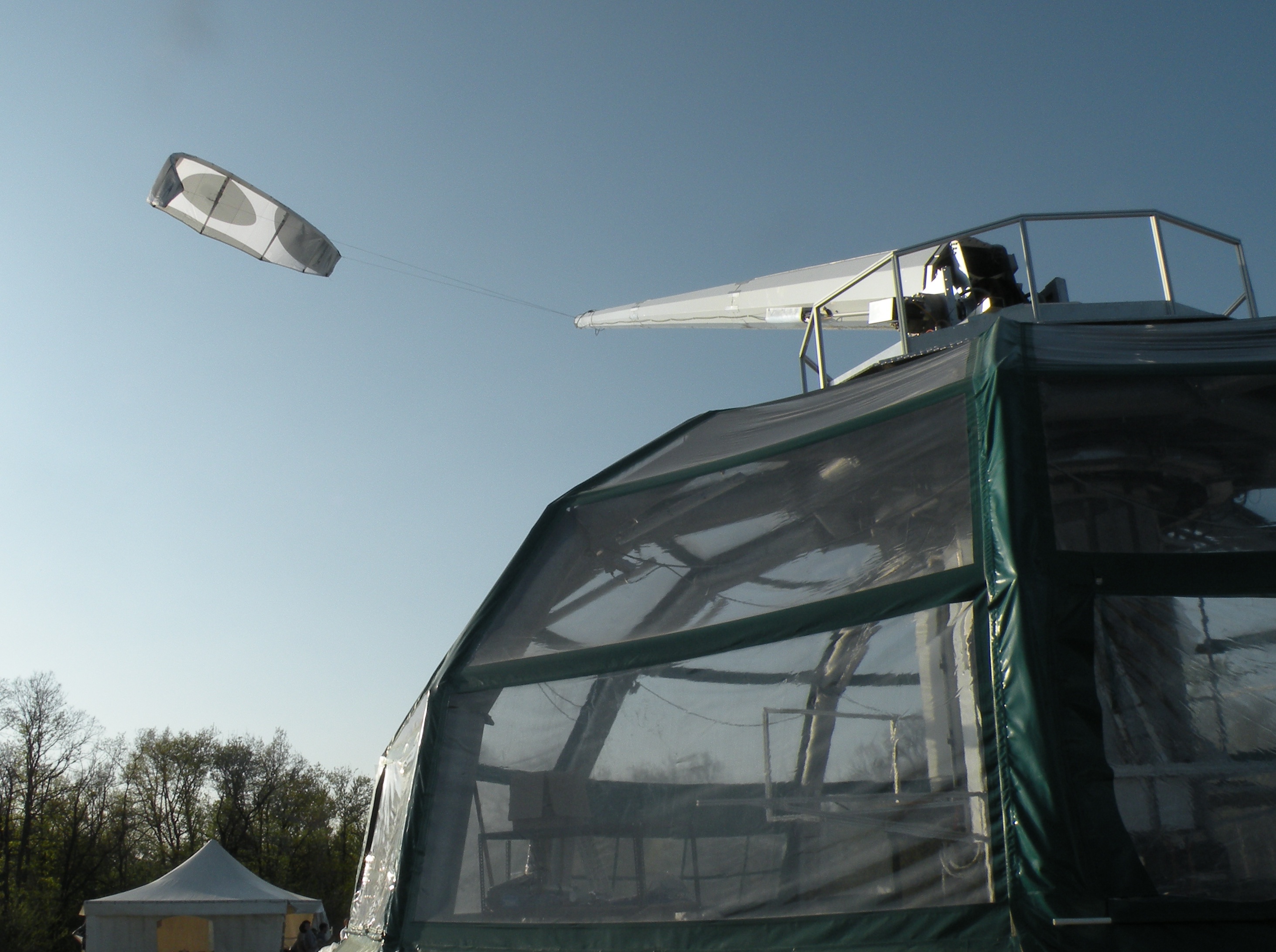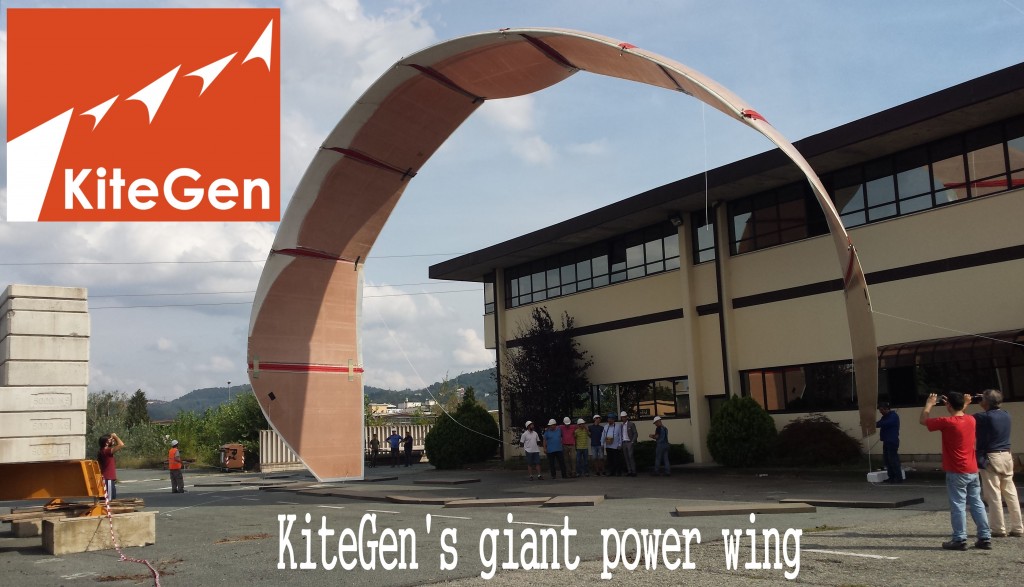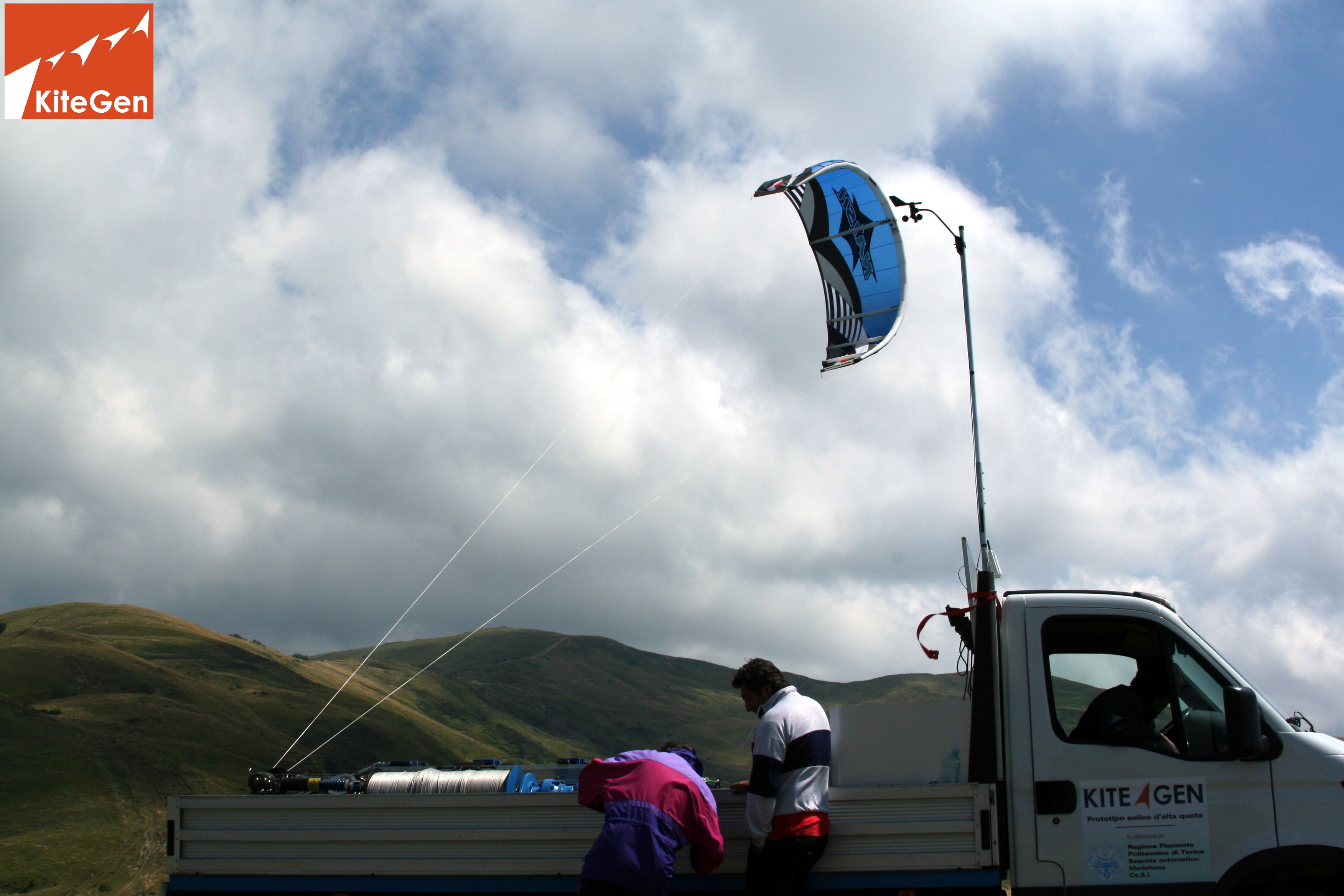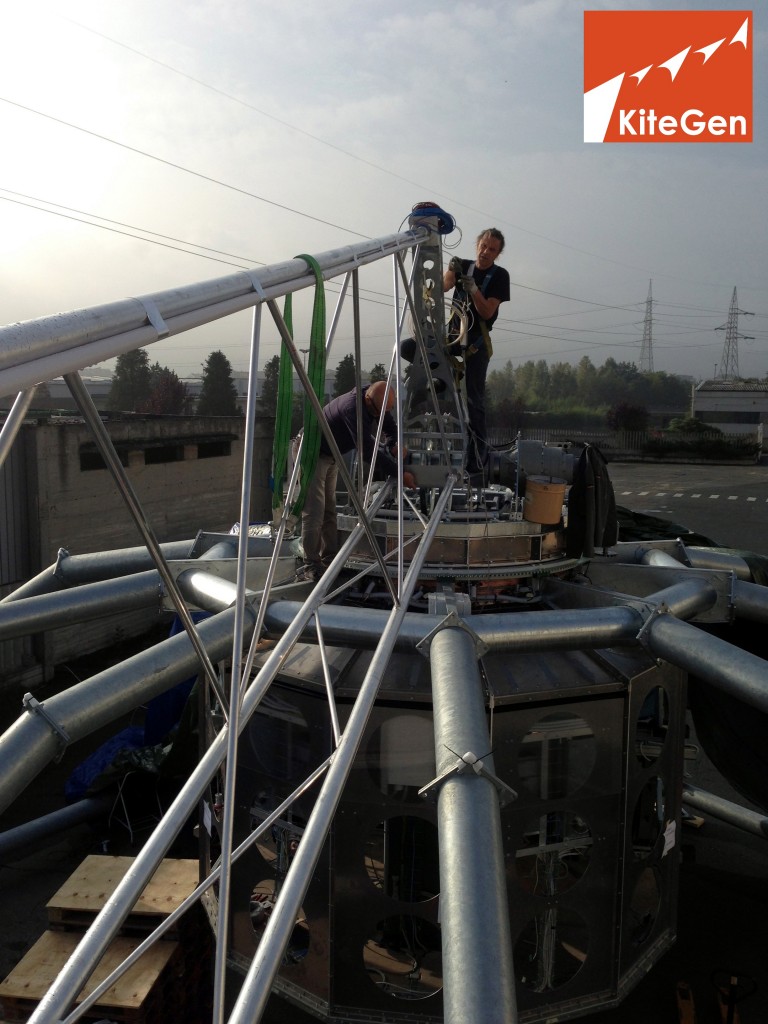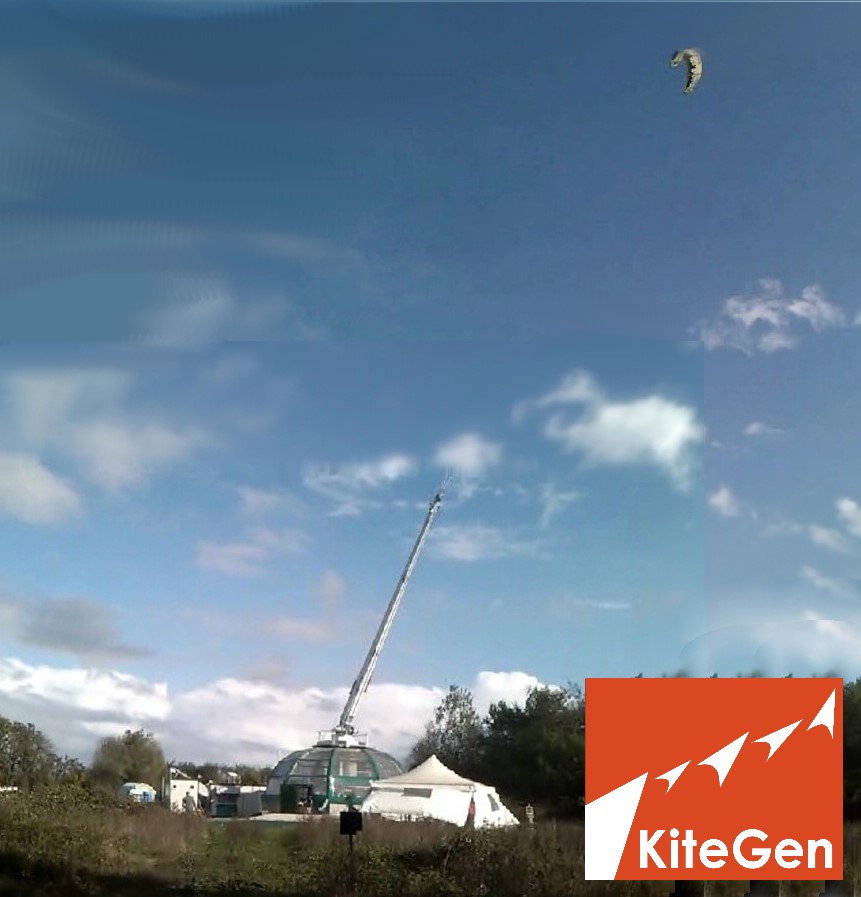KiteGen and Alcoa Updates
Kite Gen Research has become the third group to express interest regarding the aluminum smelter located in Sardinia run until today by Alcoa.
In Italy we often hear on the news the name of this company, which sadly is associated with the risks of closure and the consequent social demonstrations of its workers.
The area where Alcoa operates is one of the poorest in Italy, where unemployment rate is one of the highest, while the root cause of the problems behind its past and its future are strictly connected with energy prices. The combination of these factors, together with the recent academic studies published by Nature Climate Change (Geophysical Limits to Global Wind Power) inspired KiteGen in proposing an alternative solution to this situation.
On September 10th KiteGen sent an offer to the Italian government and the relative parties involved (Sardinian Regional Government, Alcoa, Minister of Development, Etc): KiteGen proposed the implementation of its “Industrial Program 50 Machines” (currently also under negotiations with other parties) for the production of energy of the Alcoa’s smelter from what it will be the world’s first large scale tropospheric wind farm.
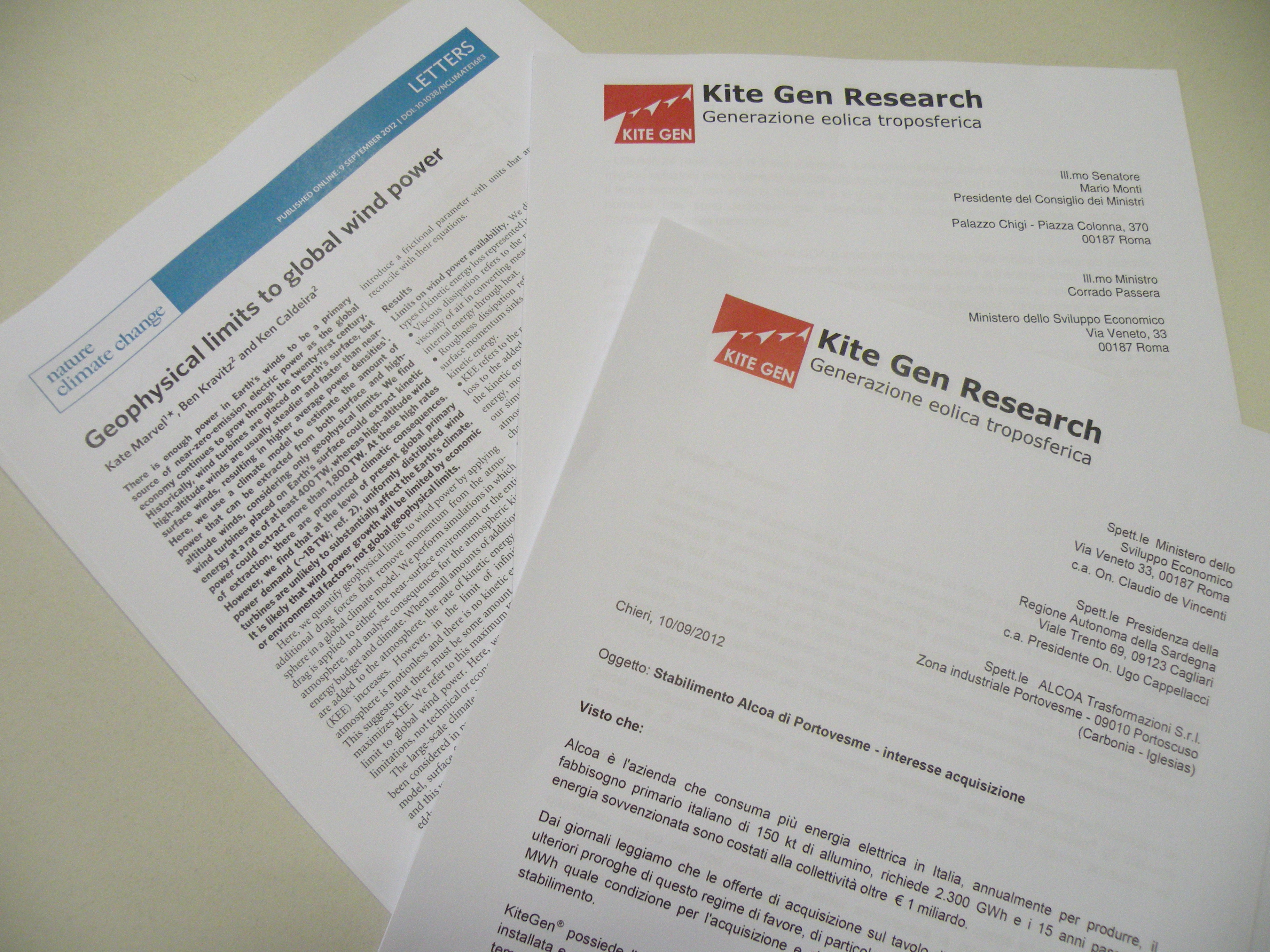 KiteGen received official interest from Alcoa and from the president of the Sardinian Region, Ugo Cappellacci.
KiteGen received official interest from Alcoa and from the president of the Sardinian Region, Ugo Cappellacci.
On Monday the 17th a delegation from KiteGen headed by its president Massimo Ippolito was hosted by the president of the Region in Cagliari to discuss the contents of the proposal.
KiteGen would like to point out that the meeting has been positive, the Regional authorities present in the meeting together with the academic presence of Dott. Damiano from the Cagliari University, were competent, prepared and opened to the views shared by KiteGen.
The two steps outlined in the documents posted on the 10th of September were discussed and there seemed to be concrete interest from the Sardinian authorities.
KiteGen offers its expertise and its innovation for implementing a short-medium term solution to the Energy issue that Alcoa most of all, but all industries in general have to face sooner or later. KiteGen solution is different from the temporary energy price agreement that might keep the smelter open in the short term. KiteGen wants to provide clean, cheap and abundant renewable energy, the only remedy that could solve this and other difficult situation in Italy, Europe and Globally.
The cost of energy is one of the main reasons why the Sardinian plant has found it difficult to compete and could be sold or closed. A relatively big Kitegen Stem wind farm at regime (200 Stems= 600 MW) could provide continuous power to the smelter at 20 €/MWh, a price lower than the one required by Alcoa to be competitive, 25 €/MWh; lower than the one that Alcoa benefitted from bilateral agreements in the last 15 years of production, roughly 33 €/MWh; and ¼ of the average market value of electricity of 80€/MWh.
We hope that the authorities, both Regional and National will soon understand the potential of this source (KiteGen is merely a technology for extraction, the High Altitude Winds are the massive “Oil Fields” above our heads), also because KiteGen would be happier to develop first its technology on the Italian territory and in a social context of real need and only after this important Italian test bench start the commercial and industrial proliferation in other areas.
One of the strengths of the KiteGen proposal is that politicians are now searching for a quick solution, based on energy price subsides needed to keep the smelter on. Those subsidies, even if allowed by EU, could be granted only for a short time, or in any case they do not represent a long term solution, rather it is just a way to gain time and mitigate the problem until a solution “falls from the sky”. Whoever the new owners of the plant may be, they will find it hard to compete without new subsidies, and in a climate of recession the chance for new allowances would be harder. The KiteGen solution (which literally comes from the sky), could be rapidly deployed during the short term EU allowance that Italian Government is likely to obtain and it will gradually eliminates the need for new energy price agreements, helping securing the future of the Portovesme plant and hundreds of related jobs.
Kite Gen asks the government to apply for EU funds of 1.3 billion euros ($1.7 billion) available for innovative projects, to demonstrate the feasibility of the KiteGen Stem technology at the scale required for the Sardinian plant, and hopes the authorities will not lack such a strategic view of the problem, considering also that there are already so many investments in other directions less promising than the one proposed by KiteGen.
In our view the risks are outplayed by the great opportunities of a competitive and fully sustainable technology that only scratches the greatest source of kinetic energy that our planet has. Is it also your view?
Stefano

 A simplified method is to divide the area to be swept with the same aerodynamic efficiency of a wing with efficiency 10 so that we will have an area of 23 square meters equivalent to a 2.5 MW classic wind turbine typically “brushing” one hectare of wind.
A simplified method is to divide the area to be swept with the same aerodynamic efficiency of a wing with efficiency 10 so that we will have an area of 23 square meters equivalent to a 2.5 MW classic wind turbine typically “brushing” one hectare of wind.